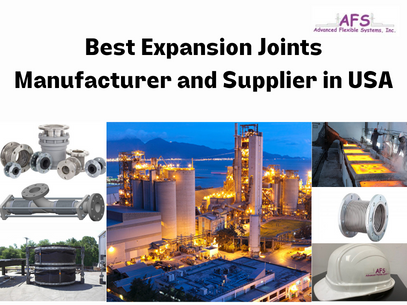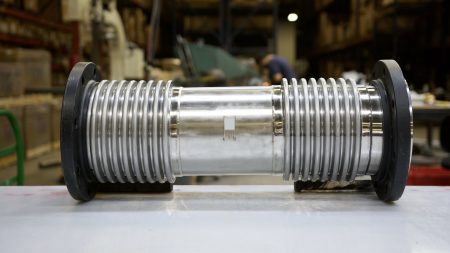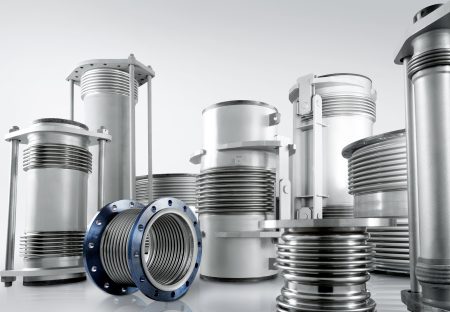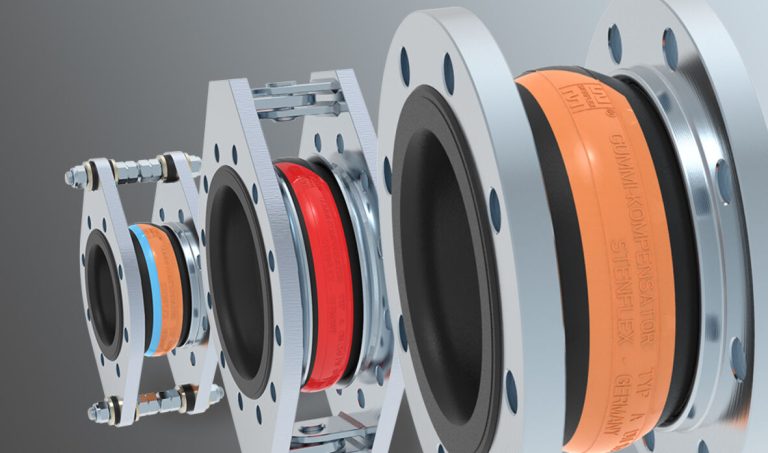Metal VS Rubber expansion joints—know the differences and advantages
Advanced flexible systems

You have come to the right place to know the advantages and differences between metal and rubber expansion joints. With the rapid rise of infrastructure and transport facilities worldwide, the demand for expansion joints is also rising. Rubber expansion joints for concrete find use in many sectors, like construction, petrochemicals, and piping systems. The rubber expansion joints for pipes help reduce the stress caused by the contraction of the expansion of pipes because of temperature changes. But with many available, depending on the materials used to make them, the end-user, and the purpose, you need to choose the right one. The most common are rubber and metal expansion joints with unique advantages and limitations.
So, check out the significant differences between the metal and rubber expansion joints and their advantages and limitations to use them safely to avoid any breakdown of the piping systems.
Basic Types Of Metal Expansion Joints

Metal expansion joints are single or multi-walled bellows made of metal to compensate for the thermal expansions and relative movements in piping systems. Many metal bellows expansion joints have connectors at the ends and tie rods that depend on their application. It may be for energy, chemical, water treatment, oil, gas, etc. Metal roof expansion joints are ideal for the construction industry to adjust the thermal changes for buildings, bridges, and others. The modern metal bellows expansion joints made with multi-ply and multi-walled designs increase their stability and flexibility. Hence, the two basic metal expansion joint types include.
The multi-ply structure has longitudinally and pressure-tight welded-out stainless steel inner cylinders. Between them, there is an open and spiral cylinder to form multiple piles, which depend on the design.
The multi-walled structure has many concentric welded cylinders longitudinally, forming an impenetrable and pressure-tight wall to resist high temperatures and absorb large movements and others.
Do’s for metal expansion joints
It is essential to know the many do’s preventing the premature failure of the metal bellows expansion joints and others. While installing and handling the metal expansion joints, it is essential to comply with the global EJMA or expansion joint manufacturers’ association standards. And not complying with do’s will not only cause the failure of expansion joints but also reduce pressure capacity and cycle life and damage the piping system.
Check for any damage during shipping like watermarks on cartons, dents, broken hardware, and others, and store them in a dry and cool place away from damaging or heavy traffic environments.
Use designated lifting lugs to fit the piping systems by compressing, stretching, or offsetting, and one flange loses until lifting into position.
Install it with the arrow pointing to the flow direction and ensure the gasket is between the liner and Van Stone flange and the mating flange and liner.
Follow all the EJMA standards for anchor recommendations and guide spacing for proper installation and handling.
Advantages: Metal expansion joints

Metal expansion joints find use in many sectors, from energy to paper production or any place using pipe experiencing thermal movements or vibration because of its many advantages.
Extreme temperature resistance is a significant advantage to withstanding from minus 420 to 1,800 degrees Fahrenheit. Depending on the used metal, it may even resist higher temperatures which the rubber expansion joints cannot withstand.
Handling high pressure is the other major advantage to resisting high-pressure situations up to 1,000 psi that many rubber expansion joints fail to resist.
Movement absorption on the lateral plane is the other advantage of metal joints but requires a special design. In contrast, rubber expansion joints absorb larger lateral movements than similar face-to-face dimensions.
Advantages: Rubber expansion joints

Rubber or elastomeric expansion joints have many advantages compared to metal expansion joints.
Costs fewer than metal expansion joints because of the minimal face-to-face dimensions and being lightweight to require no handling equipment to reduce also the labor costs
Prevents damage to motive equipment as it requires low movement forces because of its inherent flexibility compared to metal joints
Reduces fatigue breakdown chances because of using synthetic and natural elastomers and also avoids any electrolytic action caused by the rubber-steel interface of mating flange and joints
Minimizes heat losses to also reduce maintenance costs compared to the metal joints with increased heat loss
Resistant to corrosion, abrasion, and chemical erosions as there is a wide variety of elastomers available to make expansion joints
Reduces noise transmission in piping systems than metal joints as elastomers act as dampeners to absorb most of the vibration and noise.
The above facts and differences will help you choose rubber or metal expansion joints to keep your piping systems safe from any thermal changes.